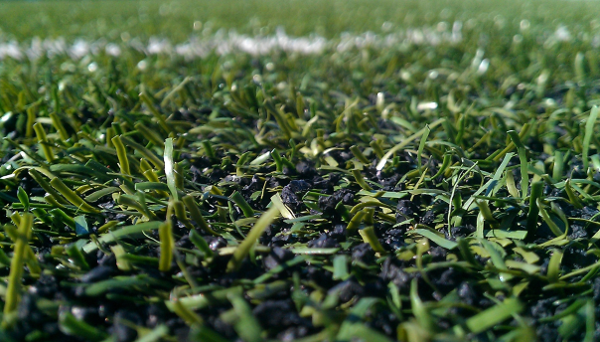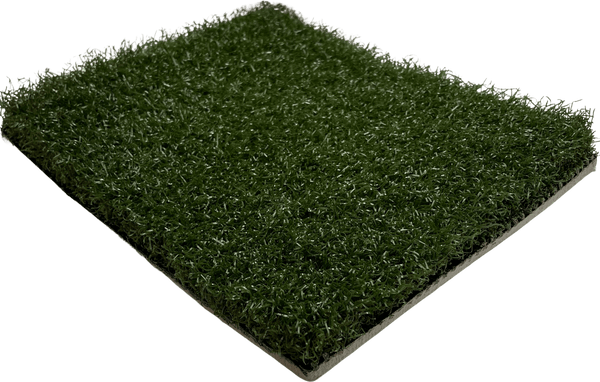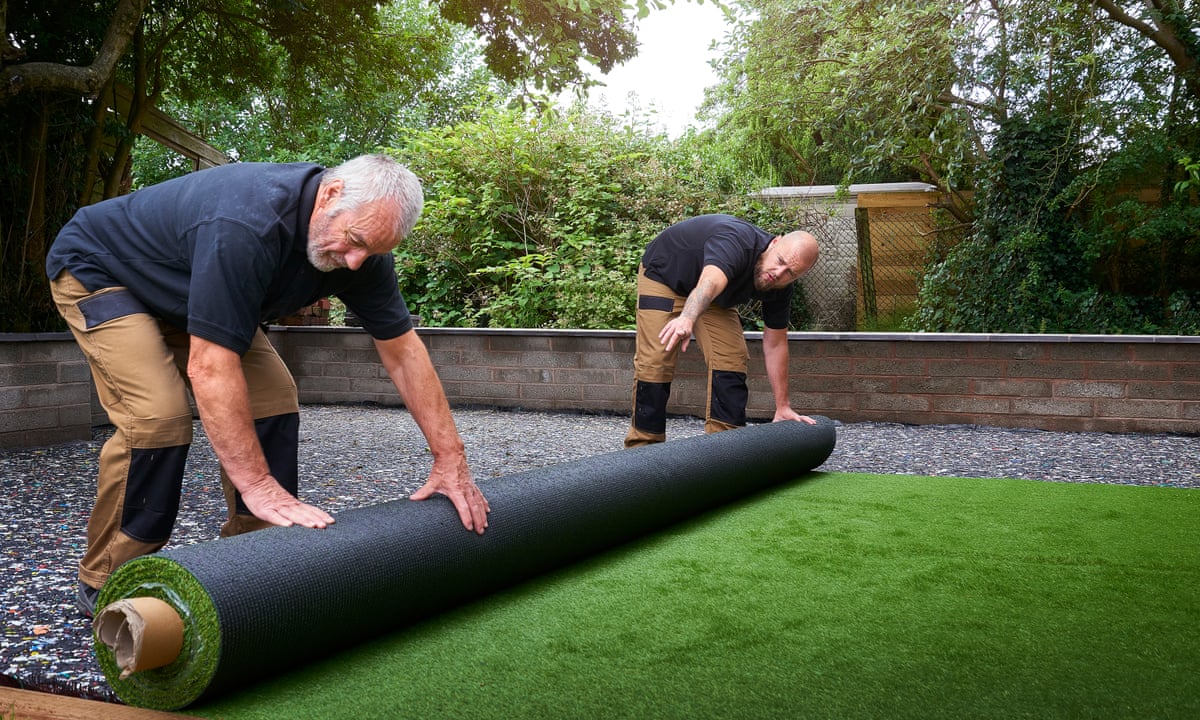See Why Homeowners Prefer Artificial Grass for Sustainable Landscaping Practices
As property owners significantly prioritize sustainability in landscaping, fabricated grass has actually become an engaging option to standard yard. Its ability to conserve water, reduce upkeep efforts, and decrease environmental influence placements it as a sensible selection for those looking for environmentally friendly services. Furthermore, the aesthetic charm and adaptability of man-made grass provide to diverse layout choices. The ramifications of this change prolong past plain comfort and aesthetic appeals, triggering a better evaluation of how these choices affect wider ecological results. What stays to be checked out is the full range of benefits that man-made grass can use to homeowners and the setting alike.
Water Conservation Benefits
Among the most considerable advantages of artificial grass is its role in water conservation. Typical turf yards need considerable amounts of water to keep their rich appearance, frequently resulting in overuse of neighborhood water resources, particularly in deserts. On the other hand, artificial lawn removes this need completely, as it does not call for irrigation. This not only conserves water however additionally decreases the strain on metropolitan water systems, specifically during dry spell conditions.
Additionally, the setup of fabricated lawn can contribute to an extra sustainable landscape. House owners can considerably lower their water costs, permitting for reallocation of sources to various other ecological efforts or family uses. In addition, synthetic grass is created to endure numerous climatic conditions without the demand for additional watering, making it a suitable selection for areas dealing with water deficiency.
The environmental benefits prolong past instant water cost savings. By decreasing water usage, synthetic grass helps to minimize the influences of environment adjustment, preserving essential ecological communities that are threatened by excessive water extraction. As lasting landscape design techniques get traction, man-made lawn becomes a liable option for homeowners seeking to produce eco-friendly outdoor areas.
Decreased Maintenance Initiatives
Artificial grass considerably minimizes maintenance efforts compared to traditional grass lawns. With artificial yard, home owners can eliminate the time-consuming jobs connected with all-natural landscaping, such as mowing, feeding, and weeding. This not just conserves valuable time however additionally lowers physical labor, making lawn care obtainable for individuals of any ages.
Traditional grass require frequent cutting to preserve a cosmetically pleasing height, whereas synthetic grass continues to be constantly lavish without the demand for cutting. In addition, home owners no much longer need to use fertilizers or chemicals, which are usually called for to keep all-natural yard healthy and balanced.
Additionally, fabricated turf is durable and resistant, needing marginal upkeep past periodic brushing and rinsing to get rid of debris. This convenience of maintenance enables house owners to enjoy their outside spaces without the constant worry of upkeep, giving more time for leisure and family members tasks. Eventually, the decreased upkeep efforts connected with synthetic grass make it an enticing alternative for those seeking a low-maintenance, aesthetically appealing landscape.

Environmental Influence Reduction
There is a growing acknowledgment of the ecological benefits connected with synthetic grass, specifically in regards to water preservation and lowered chemical use. Typical yards require substantial quantities of water, especially in drought-prone regions, resulting in boosted stress on neighborhood water resources. In comparison, synthetic grass gets rid of the demand for irrigation, significantly reducing water usage and advertising sustainability.
Additionally, conventional lawn upkeep often includes the application of pesticides, herbicides, and fertilizers, which can contribute to dirt and water air pollution. Synthetic turf minimizes this environmental risk by requiring very little upkeep and basically getting rid of the demand for dangerous chemicals. This not only enhances dirt health yet likewise secures local environments from harmful runoff.
Additionally, the manufacturing of natural yard yards commonly involves the use of nonrenewable fuel sources for mowing and landscaping equipment, further adding to greenhouse gas emissions. By selecting synthetic grass, house owners can significantly decrease their carbon footprint associated with lawn care tasks.
Visual Appeal and Flexibility
In enhancement to its environmental advantages, synthetic grass provides considerable visual charm and convenience for landscape design. House owners can accomplish a lush, environment-friendly look year-round, removing the seasonal variations typically related to natural yard. This consistent visual not like it only enhances the visual appeal of a residential property yet additionally adds to a properly maintained and refined appearance.
Furthermore, synthetic grass is offered in a variety of designs, colors, and structures, enabling personalization to fit specific choices and design themes - Artificial turf companies phoenix. Whether made use of in domestic yards, business rooms, or entertainment locations, it can flawlessly integrate into diverse landscape design designs, from modern-day minimalist to rich tropical setups
The versatility of synthetic lawn prolongs past simple look; it can be mounted in various places, including rooftops, patio areas, and even interior rooms, developing chances for special landscape design services. In addition, it appropriates for a variety of tasks, from kids's play locations to pet-friendly atmospheres, providing capability without compromising style.
Eventually, the wikipedia reference visual appeal and flexibility of synthetic grass make it an eye-catching option for property owners seeking sustainable landscaping options that do not compromise appeal for ecological obligation.

Long-Term Cost Savings
One of one of the most compelling benefits of synthetic grass is its capacity for lasting cost financial savings. Unlike natural lawn, which calls for regular maintenance-- including mowing, watering, fertilizing, and bug control-- fabricated grass substantially lowers these continuous expenditures. Home owners can save a substantial amount on water costs, particularly in regions where water deficiency is a pressing issue. The removal of yard treatment services further adds to financial cost savings, as there is no demand for specific equipment or labor.
Additionally, artificial browse around these guys lawn has a life expectancy of 15 to 25 years, relying on its top quality and use. This resilience decreases replacement costs, making it a much more cost-effective selection over time. The initial investment in synthetic lawn can frequently be recovered through the financial savings built up over time.
While the ahead of time price may appear higher compared to turf installation, the cumulative cost savings from decreased maintenance and water use commonly surpass these initial expenditures. Inevitably, the adoption of synthetic turf not only promotes a sustainable landscape design option but additionally offers homeowners a monetarily smart alternative that aligns with long-term budgeting goals.
Verdict
Fabricated grass emerges as an engaging alternative for lasting landscaping, using substantial advantages in water conservation, reduced maintenance initiatives, and diminished environmental effect. As neighborhoods significantly focus on eco pleasant techniques, the fostering of fabricated lawn stands for a progressive action towards accomplishing resilient and lasting landscapes.
In addition, fabricated grass is developed to withstand different climatic problems without the need for additional watering, making it a suitable option for areas facing water deficiency. (Arizona turf)

Fabricated turf arises as a compelling alternative for lasting landscaping, offering considerable advantages in water preservation, minimized upkeep efforts, and decreased ecological influence.